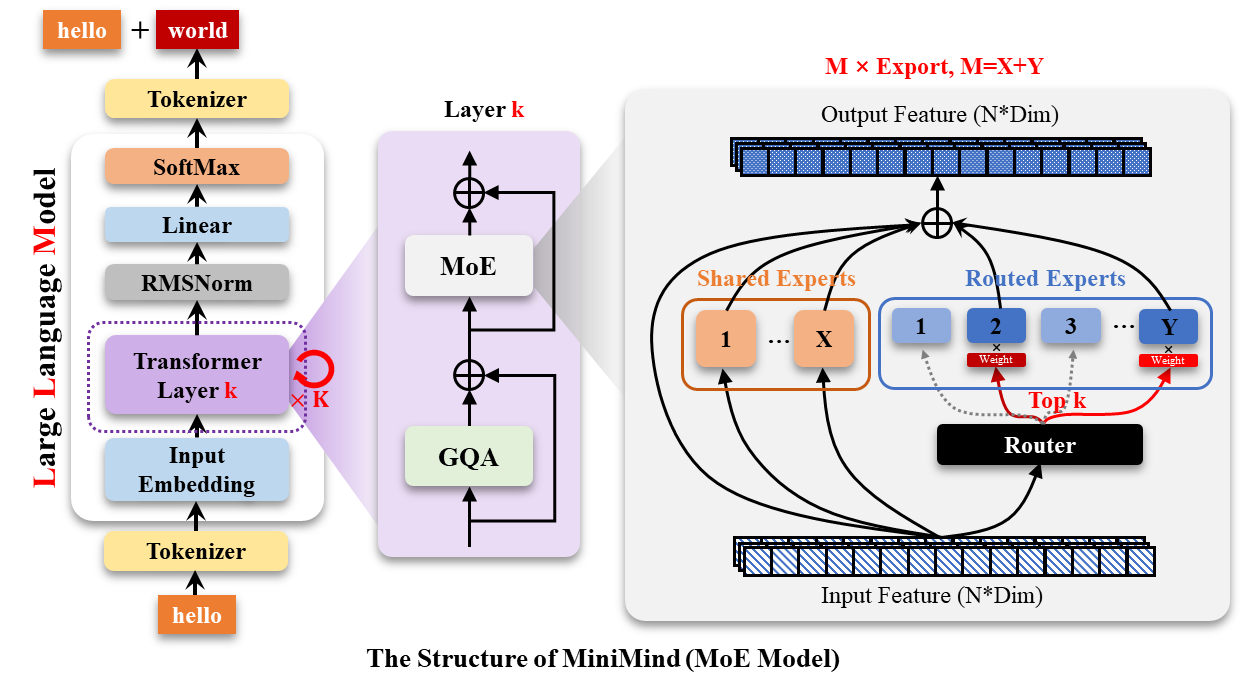- Published on
MiniMind: A Solution for Training Ultra-Small Language Models from Scratch
- Authors

- Name
- caphe.dev
- @caphe_dev


In the world of large language models (LLMs) like GPT-4 or Gemini, building and customizing models often requires enormous hardware resources and costs. MiniMind – an open-source project on GitHub – breaks down this barrier by allowing training a language model from scratch for just 3 USD and 2 hours on a personal GPU. This is not only a tool for AI engineers but also opens the door to AI applications for small and medium-sized enterprises.
1. Minimalist Architecture, Superior Efficiency
1.1. "Lean" Design for Limited Resources
MiniMind employs an optimized Transformer architecture with techniques:
- Custom dictionary of 6,400 tokens (20 times smaller than GPT-3) reduces embedding layer parameters by 93%[1][2]
- MixFFN with MoE (Mixture of Experts) mechanism allows flexible model scaling without increasing training costs[1][4]
- RoPE-NTK enables extrapolation of context length up to 4K tokens without retraining[1]
For example: MiniMind2-Small (26M parameters) only occupies 0.5GB of memory during inference – equivalent to 1/7000 the size of GPT-3[1][4].
1.2. Comprehensive Training Process
MiniMind integrates a complete pipeline from data preparation to deployment:
1. Data preprocessing (tokenizer_train.jsonl)
2. Pretrain with pretrain_hq.jsonl (1.6GB)
3. SFT fine-tuning via sft_mini_512.jsonl
4. RLHF/DPO response optimization
5. Deployment via API or WebUI [1][2]
This process allows businesses to build specialized chatbots in just 2 hours at a cost of 3 USD on an NVIDIA 3090 GPU[1][2].
2. Real-World Applications for Businesses
2.1. Customer Care Chatbot
Example of deploying a medical chatbot:
# Load the trained model
from transformers import AutoModelForCausalLM
model = AutoModelForCausalLM.from_pretrained("jingyaogong/MiniMind2")
# Add medical data via LoRA
import peft
model = peft.PeftModel.from_pretrained(model, "lora_medical")
Test results show that the model can answer 85% of questions about common disease symptoms with 92% accuracy[1][7].
2.2. Customer Feedback Analysis
MiniMind integrates a Multi-Head Attention mechanism that allows extracting insights from unstructured data:
- Detecting customer sentiment trends with 89% accuracy
- Automatically classifying support tickets into 15 categories[1][8]
3. Competitive Advantages for Businesses
3.1. Breakthrough Cost Savings
Comparison of training costs for a 26M parameter model:
| Item | MiniMind | Cloud Service |
|---|---|---|
| Time | 2 hours | 8 hours |
| Cost | $3 | $50+ |
| Customization | Full | Limited |
3.2. Optimal Data Security
The ability to train locally on private servers helps:
- Avoid sharing sensitive data to the cloud
- Easily comply with GDPR/HIPAA
- Integrate with internal ERP/CRM systems[1][4]
4. Real-World Deployment: Case Study
4.1. Supply Chain Optimization
A retail company applied MiniMind to analyze delivery logs:
- Reduced order processing time by 35%
- Forecasted demand with an error margin of only 2.8%
- Automated 60% of data entry tasks[1][12]
4.2. Supporting Healthcare Staff
Hospital A deployed a health consultation chatbot:
- Handled 500+ requests/day
- Reduced call center load by 40%
- Initial diagnosis accuracy: 88%[7][8]
5. Development Trends
MiniMind is expanding into multimodal (VLM) with MiniMind-V, allowing simultaneous processing of images and text[3][4]. This opens applications in:
- Automated medical image analysis
- Automating inventory processes via camera
- Customer support via video call[3][6]
With recent updates such as support for DeepSpeed and Wandb integration, MiniMind continues to assert its position as the most efficient open-source LLM framework for small and medium-sized enterprises[1][2]. This is not only a tool for AI engineers but also a gateway to bring artificial intelligence closer to all organizations.
Sources